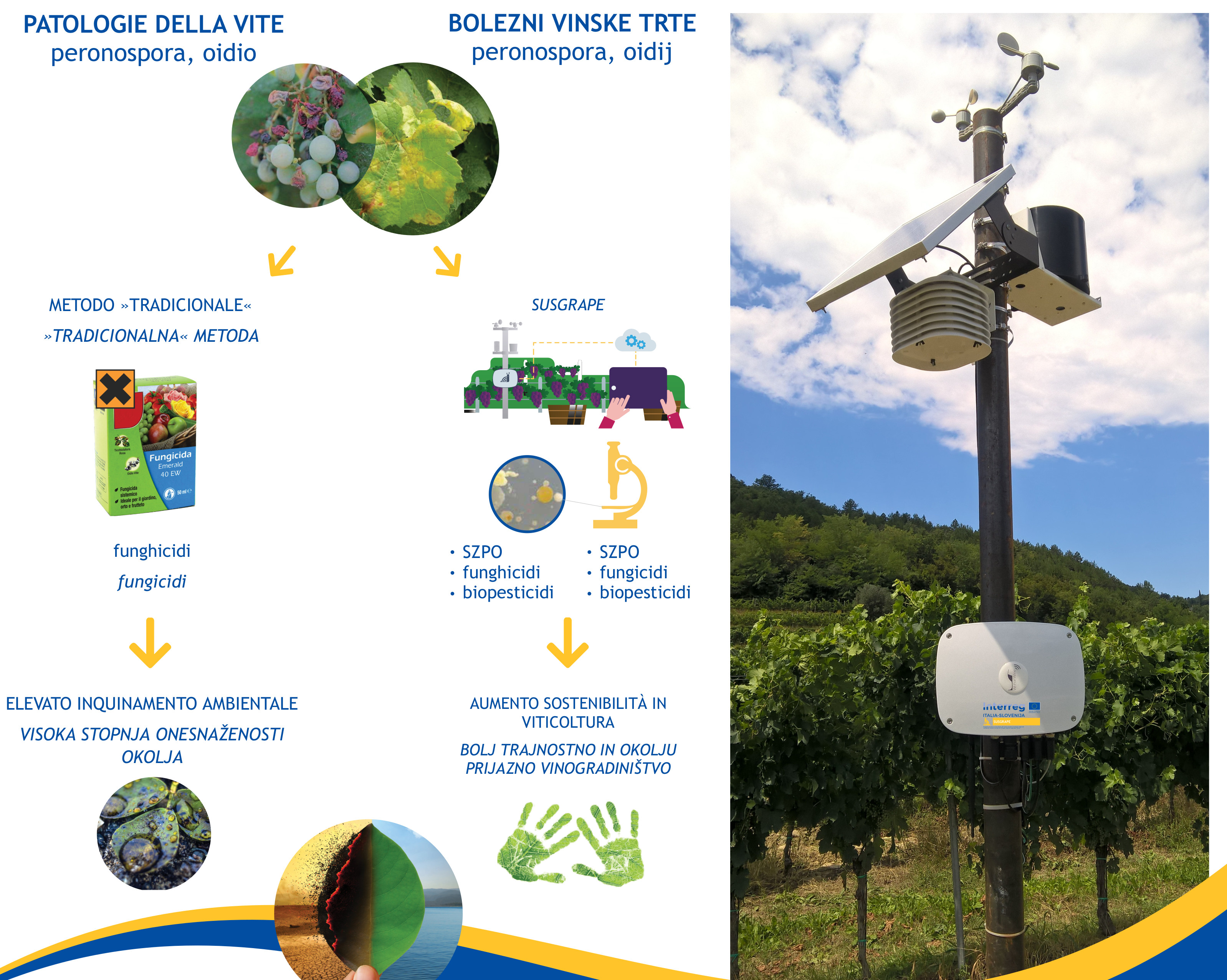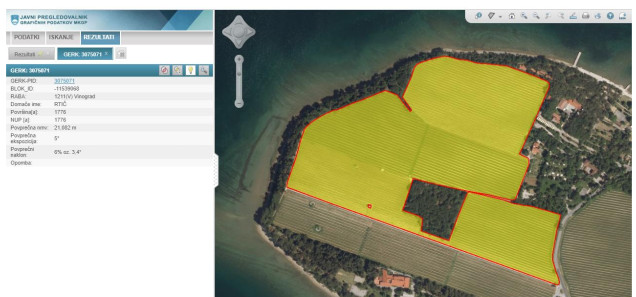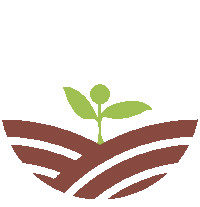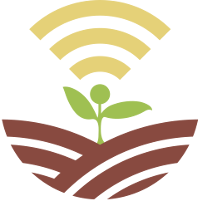Duration: 30 months, from October 2017 to March 2020
Official page of the SUSGRAPE Project: https://www.ita-slo.eu/it/susgrape
 The challenge
The challenge
The Smart Specialization Strategies of Friuli Venezia Giulia and Slovenia both provide for the promotion of sustainable, environmentally friendly and high-quality agricultural production. The challenge is to create an excellent case study focused on the reduction of chemistry in vineyard management through cooperation between scientific research and producers, enhancing new 4.0 technologies as a tool and opportunity for innovation. The future of agriculture is to use the environmental data made available by new technologies (Big-Data and IoT) to obtain smart integrated pest management and defense that acts only where, when and if necessary.
The goal
The goal is innovation in the management of the defense of the vineyard to save resources, improve product quality and respect the environment by enhancing the territory. Field monitoring technologies (IoT) and predictive phytopathological modeling (DSS) are facilitating tools. The aim is to promote the innovation and acquisition skills of new technologies by wineries through the development of synergies between producers, ICT companies and research centers with the ultimate aim of achieving a reduction in the use of chemical products in agriculture. In the field of phytosanitary optimization, SUSGRAPE focuses on the diseases of late blight and powdery mildew identified as a priority by the producers themselves.
How does it work
The SUSGRAPE work model includes the following steps carried out and in some cases repeated over 30 months of work.
- Study of the reference territory for the identification of the main geographical micro-areas associated with different micro-climates
- Creation of an agro-weather monitoring network in the area by installing a number of customized measuring stations and sensors on each identified micro-area; in the SUSGRAPE project, 42 measuring stations were installed with sensors in the air, on the plant and in the ground.
- Development and validation, first from an agronomic point of view and then software, of customized forecast models, dedicated to Downy mildew and Powdery mildew, optimized for the work territories and for the target crop varieties;
- training and tutoring of agricultural enterprises (with their agro-technical staff) in the use of agro-weather data, vineyard management web services (for example in the compilation of a digital campaign notebook) and DSS forecast models on Downy mildew and Oidium.
- Annual calibration of the forecast models on Downy mildew and Powdery mildew: every year the models and the relative DSS are improved by training them in an ever more precise and punctual way to the micro-climates and local cultivation varieties.
- Creation of a stable network of cooperation between manufacturers, IoT technology developers and researchers in the agronomic and modeling field.
 Results
Results
The SUSGRAPE working model has allowed the beneficiary farms to operate a precise control on their field (thanks to the sensors installed), accurately monitoring climatic and phytosanitary risks and saving on treatments, losses in difficult years and human resources. The availability of a technological tool (measurement network and forecasting models) optimized in the target territory makes these benefits reachable by an entire local production ecosystem and not only by the individual producer.
-
- Innovative forecast models on Downy mildew and Powdery mildew with related software to support DSS decisions; the innovation consists in the personalization of the models (whose training in local micro-climates can be improved every year) which guarantees better results for each micro-area.
- Reduction of the number of treatments performed annually on an agricultural lot with consequent reduction of production costs (savings in the purchase of plant protection products, working hours of machines and human resources in the field).
- Improvement of product quality: thanks to the use of the DSS forecast models, we not only achieve a reduction in the number of treatments but also an optimization of the timing (I intervene at the optimal time to maximize the effectiveness of the plant protection product), obtaining healthier grapes with fewer plant protection products.
- Increase of the economic and environmental sustainability of agricultural enterprises.
- The effective communication of the care and attention practiced by the company towards the environment and field crops can be used to enhance market positioning.
Development and diffusion in the territory of technologies to support sustainable agricultural techniques, such as the scientifically valid prediction and early diagnosis of pathogens for crops and the reduction of water consumption.


